In the ever-evolving landscape of blockchain technology, fragmentation presents a significant challenge. With numerous blockchains boasting unique functionalities and ecosystems, navigating between them can be cumbersome and inefficient. Enter Multichain, a revolutionary protocol poised to bridge the gap and unlock a new era of interoperability.
History of Multichain
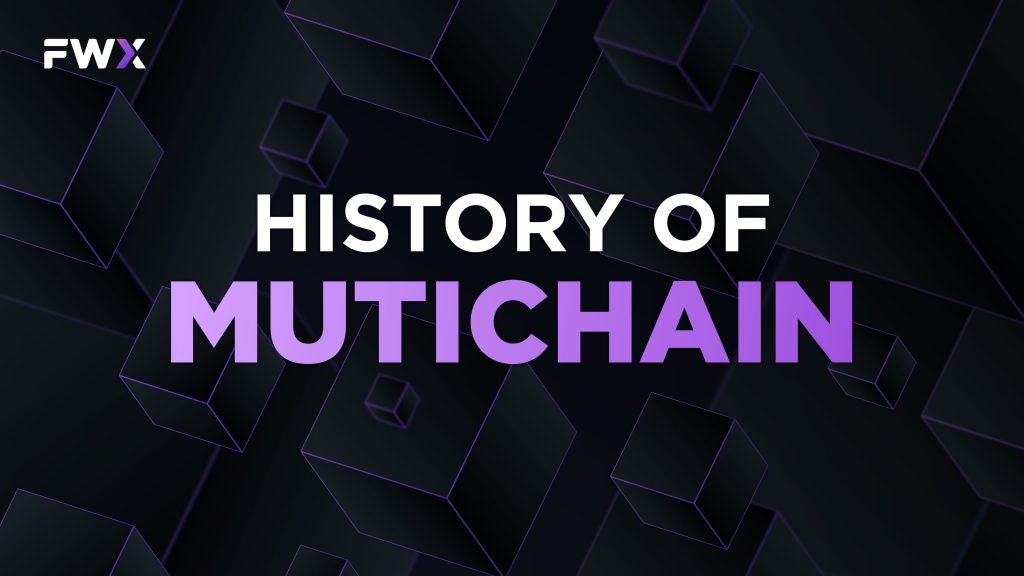
Pre-Multichain Era:
- Bitcoin (2009): It all started with Bitcoin, introducing the underlying blockchain technology in 2009. While revolutionary, Bitcoin was limited to monetary transactions and didn’t support smart contracts.
- Ethereum (2015): The arrival of Ethereum in 2015 was a game-changer. Its introduction of smart contracts enabled a vast array of decentralized applications (dApps) across various sectors, laying the foundation for the growth of blockchain beyond just Bitcoin.
Rise of the Multichain Ecosystem:
- Scalability Challenges: As you mentioned, Ethereum’s popularity led to network congestion and high transaction fees. This bottleneck spurred the development of alternative blockchain platforms to fulfill different needs and offer enhanced scalability.
- Diversification and Specialization: Each new blockchain offered unique features and functionalities, appealing to specific use cases and communities. This resulted in a diversifying landscape, marking the beginnings of the multichain ecosystem.
- Early Cross-Chain Solutions: Recognizing the growing fragmentation, innovative solutions like cross-chain bridges emerged. These bridges aimed to connect isolated blockchains, enabling asset transfers and limited interaction between platforms.
Evolution and Continued Development:
- Cross-Chain Bridge Boom: In recent years, we’ve witnessed a surge in cross-chain bridge projects, each with varying levels of sophistication and security. Multichain platforms like Aeternity and Cosmos IBC focus on seamless interoperability within their ecosystems.
- Layer 2 Scaling Solutions: Blockchain scalability efforts also took a different direction with Layer 2 (L2) solutions. These protocols operate on top of existing blockchains like Ethereum, taking transaction processing off-chain to reduce fees and congestion.
- Interoperability Standardization and Future Horizons: Efforts are underway to establish standardized protocols for cross-chain communication and collaboration. The emergence of the Inter-Blockchain Communication (IBC) protocol and initiatives like the Web3 Foundation aim to create a more unified and interconnected future for blockchains.
What Is Multichain?
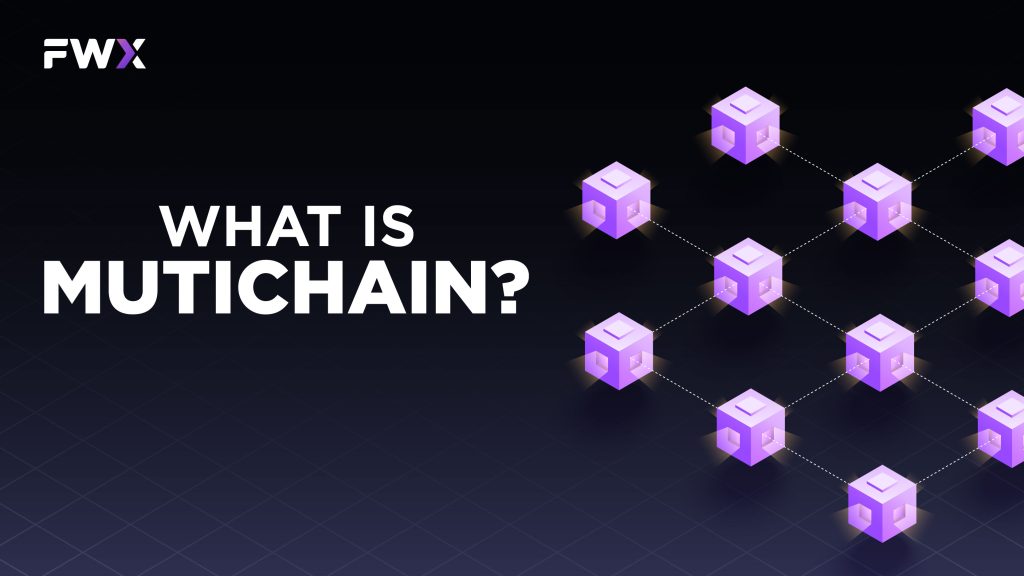
Multichain revolutionizes blockchain technology by enabling the creation of multiple independent blockchains within a single network, offering flexibility for both private and public chains.
With distinct rules and consensus mechanisms for each chain, multichain introduces interoperability features for seamless communication between layers. As an open-source platform, it connects apps to multiple blockchains, supporting personal use and expediting financial transactions.
The Multichain network, featuring a manageable private setup and supporting various programming languages, allows easy creation and exchange of native tokens. It processes up to 1,000 transactions per second, and developers benefit from a user-friendly interface and API, expanding Bitcoin’s interoperability.
How does Multichain work?
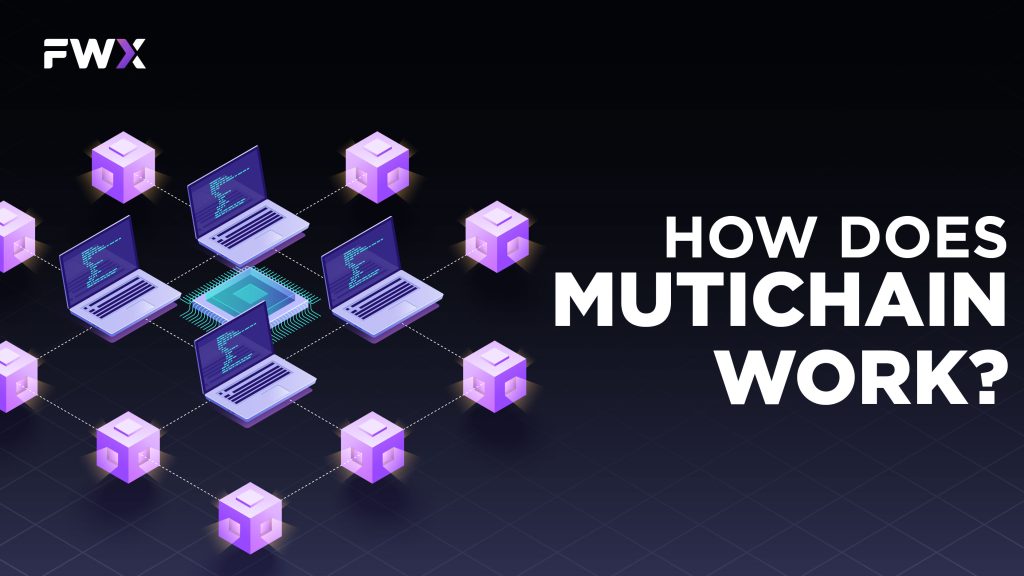
The multichain paradigm is a concept that connects various blockchains, creating a network similar to the internet. This allows users to conduct transactions effortlessly across multiple blockchains simultaneously. The approach involves breaking down the underlying blockchain into layers, with the consensus layer ensuring security across the entire system. The programmable application layer enables different blockchains to coexist and communicate freely, exemplified by Cosmos.
This concept addresses the challenges of blockchain fragmentation, where isolated blockchains impede accessibility and connectivity. In multichain applications, developers set up separate instances for each blockchain, facilitating expansion in a multi-chain environment. This is particularly important for applications aiming to attract users from diverse blockchain ecosystems, simplifying accessibility without complicated procedures.
Multichain applications play a crucial role in decentralized applications (dApps) by bridging the gap between different blockchains, ensuring seamless user access. The objective is to engage users in the blockchain environments they are already familiar with, making the process simpler and promoting interoperability across the blockchain landscape.
Multichain key features
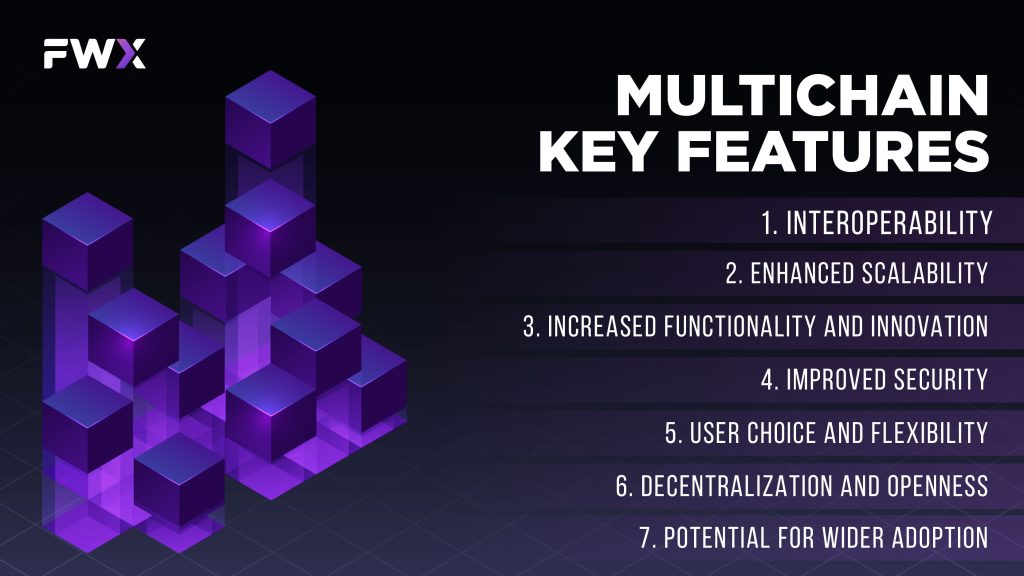
Multichain technology boasts a range of key features that unlock its potential for a more interconnected and powerful blockchain ecosystem. Here are some of the most prominent:
1. Interoperability: This is the core principle of multichain, enabling seamless communication and data exchange between different blockchains. Cross-chain bridges, liquidity pools, and direct communication protocols act as the bridges, breaking down the walls between isolated chains.
2. Enhanced Scalability: By distributing workloads across multiple blockchains, multichain applications can bypass the congestion issues plaguing individual chains. This allows for faster transactions, higher throughput, and a more efficient overall user experience.
3. Increased Functionality and Innovation: By combining the unique strengths of different blockchains, multichain applications can offer a wider range of features and functionalities than any single chain could achieve. This opens doors for innovative dApps that leverage the specific characteristics of each blockchain for maximum impact.
4. Improved Security: Multichain can enhance security in certain scenarios. By distributing assets and data across different chains, it becomes more difficult for attackers to target any single point of vulnerability. Additionally, some cross-chain protocols offer enhanced security features like multi-signature verification.
5. User Choice and Flexibility: Multichain empowers users to choose the blockchain that best suits their needs. Whether it’s prioritizing security, speed, or specific features, users have the freedom to navigate the blockchain landscape and leverage the strengths of each chain.
6. Decentralization and Openness: By spreading activity across multiple chains, multichain furthers the decentralization of the blockchain ecosystem. No single chain holds absolute power, and the network is more resistant to censorship and manipulation. Additionally, the open-source nature of many multichain solutions fosters transparency and collaboration.
7. Potential for Wider Adoption: By making blockchain technology more user-friendly and accessible through multichain applications, the potential for wider adoption increases. This can open doors for new use cases and integrate blockchain into mainstream applications and industries.
Why Multichain is important?
There are several reasons why developers might choose to build a multichain application:
- Reach a wider audience: By deploying on multiple blockchains, a dApp can reach a larger pool of potential users. This is especially important for applications that target specific niche markets or communities.
- Access unique features: Different blockchains have different strengths and weaknesses. For example, Ethereum is known for its smart contract capabilities, while Solana is known for its fast transaction speeds. By building on multiple chains, a dApp can access the unique features of each chain to create a more comprehensive experience.
- Increase security and resilience: By distributing data and functionality across multiple chains, a multichain application is more resistant to attacks and outages. If one chain goes down, the application can still function on the other chains.
- Improve interoperability: One of the biggest challenges in the blockchain space is interoperability, the ability for different chains to communicate with each other. Multichain applications can help to bridge the gap between different chains and make it easier for them to work together.
Building a multichain application can be complex, and there are many challenges to consider. These challenges include:
- Technical complexity: Developing and maintaining a dApp that runs on multiple chains can be technically challenging. Developers need to be familiar with the different blockchain platforms and how to write code that is compatible with each one.
- Security risks: When you spread your data and functionality across multiple chains, you also increase the attack surface. It is important to carefully consider the security risks of building a multichain application and take steps to mitigate them.
- User experience: It can be difficult to create a seamless user experience for a dApp that runs on multiple chains. Users should not be aware of the underlying complexity of the application and should be able to interact with it easily, regardless of which chain they are using.
Cross-Chain vs Multichain
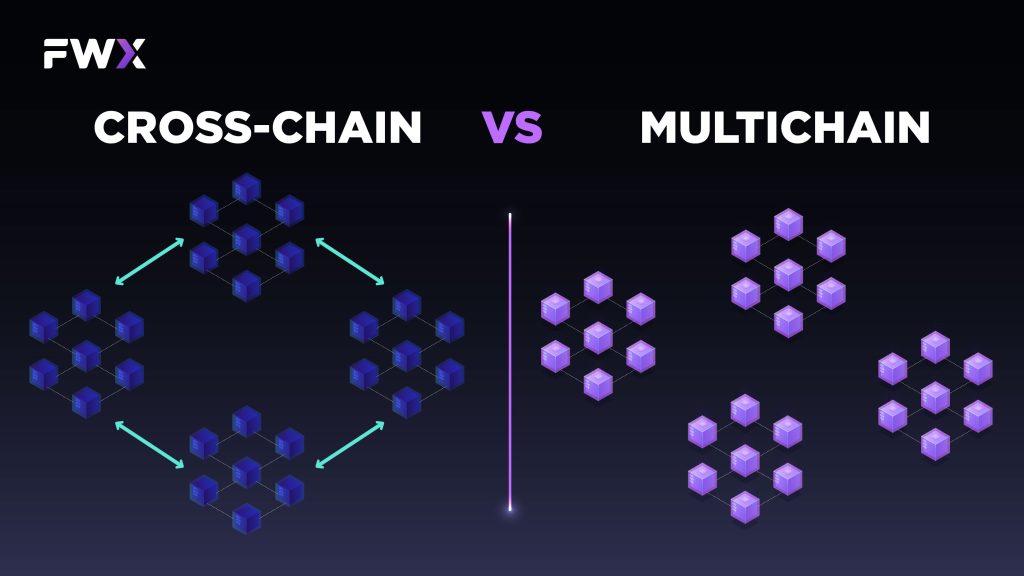
Cross-Chain and Multichain are two distinct approaches within the broader blockchain ecosystem, each serving specific purposes and addressing different challenges. Let’s explore the key differences between Cross-Chain and Multichain technologies:
1. Definition:
Cross-Chain:
- Definition: Cross-Chain refers to the capability of transferring assets or information between different blockchain networks.
- Purpose: Enables interoperability between disparate blockchain platforms, allowing assets or data to move seamlessly across multiple blockchains.
Multichain:
- Definition: Multichain refers to a single blockchain platform that can create and manage multiple, independent blockchains, often referred to as “side chains” or “sub-chains.”
- Purpose: Focuses on providing a solution for organizations to deploy their own private, permissioned blockchains tailored to specific use cases.
2. Interoperability:
Cross-Chain:
- Interoperability: Primarily concerned with interoperability between existing, independent blockchains.
- Use Case: Facilitates the transfer of assets or data between different blockchain networks, enhancing collaboration and connectivity in the blockchain space.
Multichain:
- Interoperability: Focuses on creating and managing multiple blockchains within a single platform.
- Use Case: Designed to meet the specific needs of organizations by providing them the ability to deploy and manage private, permissioned blockchains.
3. Control and Permission:
Cross-Chain:
- Control: Assets or data transferred across chains typically involve cross-chain protocols and may not necessarily be controlled by a single entity.
- Permission: The level of permission required may vary depending on the specific cross-chain implementation.
Multichain:
- Control: Provides a high level of control to the organization deploying the Multichain, especially in terms of permissioned access.
- Permission: Operates on a permissioned blockchain model, where access and participation are restricted to authorized entities.
4. Focus:
Cross-Chain:
- Focus: Primarily focuses on solving the challenge of interoperability between existing blockchains, aiming to create a seamless connection between different blockchain ecosystems.
Multichain:
- Focus: Focuses on providing a comprehensive solution for organizations to create and manage their own private, permissioned blockchains, tailored to specific use cases and requirements.
Advantages and disadvantages of Multichain
Advantages of Multichain:
- Cross-chain interoperability: Multichain allows seamless transfer of tokens and assets between different blockchains, expanding user accessibility and breaking down blockchain silos.
- Flexibility and customization: Multichain supports various blockchains and offers different deployment options, enabling developers to tailor solutions to their specific needs.
- Ease of use: The platform boasts a user-friendly interface and API, making it easier for developers and users to interact with cross-chain applications.
- Security: Multichain utilizes several security measures like multi-signature wallets and decentralized governance to protect user funds and assets.
- Scalability: Multichain can handle a large volume of transactions due to its efficient routing mechanism and ability to leverage multiple blockchains.
Disadvantages of Multichain:
- Limited smart contract functionality: Unlike some other cross-chain platforms, Multichain doesn’t natively support complex smart contracts, potentially restricting its utility for certain applications.
- Centralization concerns: While it’s evolving towards decentralization, the platform currently relies on centralized nodes for some functions, raising potential trust and censorship concerns.
- Relatively new and untested: Compared to established platforms, Multichain has a shorter track record and may be more susceptible to unforeseen vulnerabilities or technical issues.
- Transaction fees: Depending on the chosen blockchain and routing, fees associated with cross-chain transactions on Multichain can be higher than on single-chain solutions.
- Not all chains supported: While supporting a good range, Multichain doesn’t encompass every blockchain in the ecosystem, potentially limiting its reach for certain users and applications.
The future of Multichain
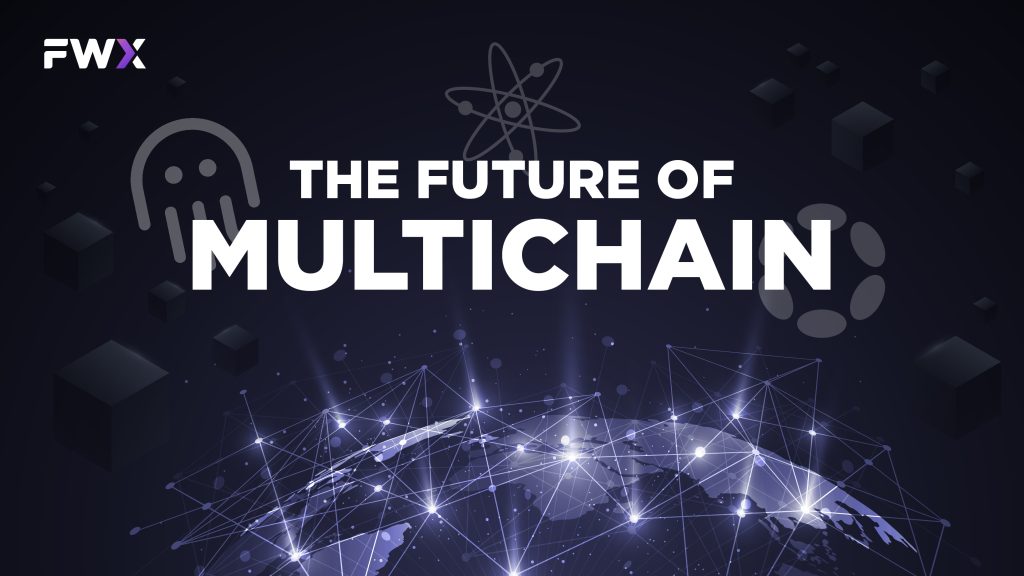
The future of Multichain appears promising, as the technology continues to evolve and meet the demands of a rapidly changing digital landscape. Several factors contribute to shaping the future of Multichain:
Growth and Adoption:
- Wider user base: As awareness and understanding of Multichain’s features increase, adoption could grow across various industries, attracting developers, businesses, and individual users.
- Cross-chain bridges: Continued development of secure and efficient cross-chain bridges could solidify Multichain as a key player in connecting various blockchains and fostering interoperability.
- DeFi and DAO integration: Increased integration with DeFi and DAO protocols could leverage Multichain’s customizability and private network capabilities for building innovative financial applications and governance structures.
Challenges and Competition:
- Security concerns: Bridge hacks and smart contract vulnerabilities could pose reputational risks and hinder widespread adoption. Addressing these security challenges remains crucial.
- Competition: Other interoperability solutions and platforms like Cosmos, Polkadot, and Avalanche are also vying for market share. Multichain needs to constantly evolve and innovate to stay ahead of the curve.
- Limited network effect: Private networks may offer advantages, but they also contribute to a less robust and interconnected ecosystem compared to public blockchains. Finding ways to balance customization with network effects will be important.
Potential Outcomes:
- Centralized hub: Multichain could become a central hub for connecting various blockchains, facilitating asset transfer, data exchange, and dApp development across disparate ecosystems.
- Specialized niche: Alternatively, it might thrive in specific niches like private blockchains for enterprises or niche asset bridges with unique features.
- Evolving platform: Most likely, Multichain will continue to evolve, adapting to technological advancements and user needs. New features, integrations, and functionalities could emerge, shaping its future role in the blockchain landscape.
In Conclusion, Multichain weaves a tapestry of interconnected blockchains, shattering the silos of single-chain solutions. Its customizable essence empowers bespoke dApps, data flows freely across borders, and collaboration reigns supreme. This open-source symphony unlocks a democratized future where blockchains work in concert, painting a masterpiece of innovation. Embrace Multichain, and step into a world where the boundaries are not chains, but threads of a boundless future.


